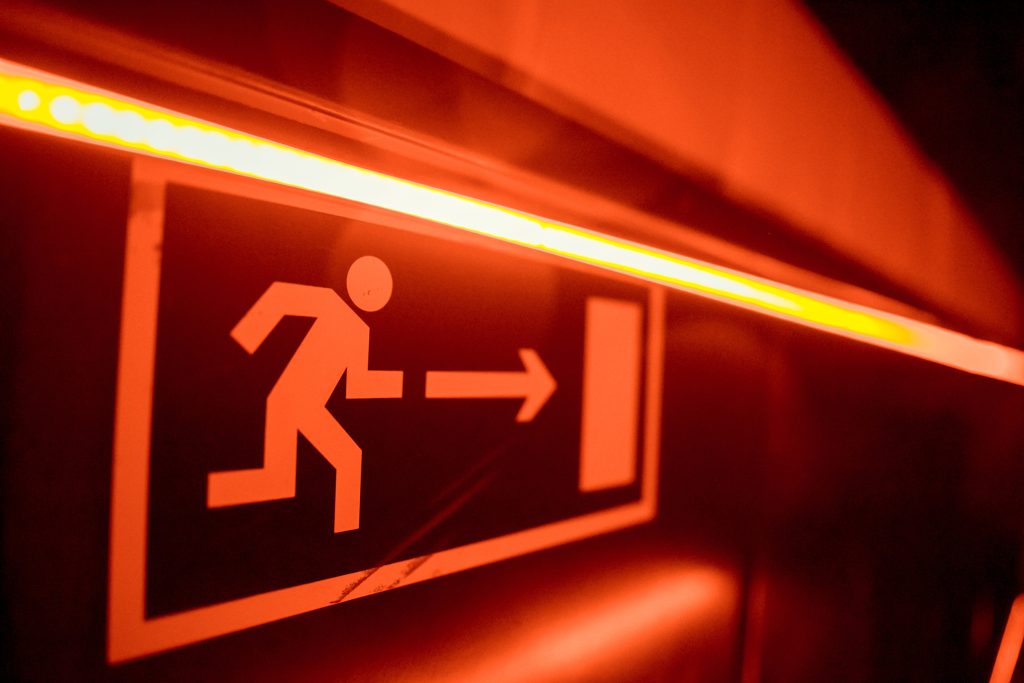An important shift in fire safety

Fire exits in car park area and frame of fire burn.
 Henry Rowden, Technical Manager at Vanquish Hardware Protection, a leading UK manufacturer of precision intumescent kits for rebated hardware in timber fire doors, discusses why the shift to EN 1634:1 is a positive step for fire safety in the UK.
Henry Rowden, Technical Manager at Vanquish Hardware Protection, a leading UK manufacturer of precision intumescent kits for rebated hardware in timber fire doors, discusses why the shift to EN 1634:1 is a positive step for fire safety in the UK.
The UK government’s recent announcement to abolish national classes for fire testing, specifically BS 476:22, for fire tests on building materials and structures, marks a significant turning point in the fire safety industry and will have considerable implications on fire door testing and intumescent hardware protection.
Fire doors tested in England have historically been tested to BS 476 Part 22, but this will be completely replaced with EN 1634:1 in 2029. In the meantime, this will not apply to existing buildings, and doors tested to BS 476:22 can still be retrofitted.
New buildings, however, will have to be specified to EN standards from next March.
This is primarily because the British reaction to fire tests were inadequate for building materials, which became obvious post Grenfell, and the European test methods were much more robust. However, this also means that BS 476:22 had to go.
This transition is a welcome move and presents opportunities for our sector.
EN 1634:1 is widely recognised as a more stringent testing method, which aligns with our commitment at Vanquish to provide the highest level of fire safety products.
One of the key differences between the two standards lies in the test conditions. The neutral pressure plane is 1000mm above the threshold for BS, instead of 500mm for EN, while the EN test uses insulated thermocouples, as opposed to non-insulated ones for BS, and for these reasons, the EN 1634:1 test is considered more demanding as the furnaces are driven harder at the beginning of the test. This increased rigour in testing will undoubtedly lead to safer buildings and better protection for occupants.
Due to being considered a more stringent test, most companies testing hardware to the EN standard will include intumescent protection on the doorset as a matter of course. The minimal cost of including intumescent materials on a fire test is also negligible compared to the overall cost of fire testing, yet the impact of the added protection of intumescent around the weakest parts of the doorset on maintaining integrity during a fire is substantial.
Most doorsets tested to the EN standard will be required to fit intumescent hardware protection to some, if not all rebated hardware and this is likely to have a huge knock-on effect on the fire door industry, drastically increasing the demand for intumescent hardware protection as more doors are specified to the EN standard once the removal comes into force.
At Vanquish we have increased our production capacity by 30% to ensure that we can meet the growing needs of the market while maintaining our high standards of quality and precision.
While the shift to EN 1634:1 represents progress in fire safety testing, it should be noted that there is no evidence to suggest that doors tested to EN 1634:1 are superior in a real fire situation to doors tested to BS 476:22.
The effectiveness of any fire door depends on correct specification, installation, and maintenance and a well-maintained door tested to BS 476:22 can still provide excellent protection to a building and its residents.
We have an in depth understanding of intumescent hardware protection and have first-hand experience in testing to both BS476:22 and EN 1634-1. Our role at Vanquish is not just to provide top-quality intumescent products, but also to educate and support the industry in best practices and we are committed to supporting our clients through this transition period, offering expertise and products that meet both current and future standards.
Vanquish manufacture their own graphite intumescent compound, FlexiFire, and are converters of Monoammonium Phosphate (MAP) intumescent. For more information on Vanquish, visit https://www.vanquish-hp.co.uk/ or call 01725 578020.













